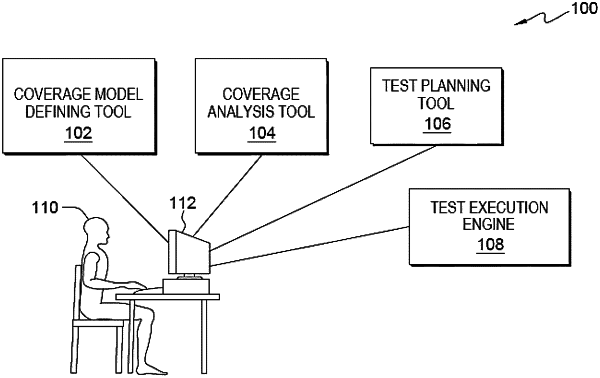| CPC G06F 11/263 (2013.01) [G06F 11/3664 (2013.01); G06F 11/3684 (2013.01); G06F 11/3692 (2013.01); G06F 11/3676 (2013.01)] | 20 Claims |

|
1. A method for detecting and localizing a fault when testing a system under test (SUT), the method comprising:
modeling inputs to the SUT as a collection of attribute-value pairs;
generating an initial set of test vectors that provides complete n-wise coverage of a test space represented by the attribute-value pairs;
generating a set of testcases using the initial set of test vectors;
executing the set of testcases to obtain a set of execution results, the execution results being in binary form indicative that a testcase succeeded or failed, the set of testcases executed a plurality of times;
updating, for each execution of the set of testcases, for each attribute-value pair, a non-binary success rate (SAV) based on the set of execution results, wherein the non-binary success rate of an attribute-value pair is based on execution results of each testcase that uses said attribute-value pair;
in response to a success rate of an attribute-value pair being below a predetermined threshold:
identifying a subset of testcases that use the attribute-value pair;
identifying, based on execution of the subset of testcases, a first set of code paths that result in successful execution, and a second set of code paths that result in failed execution;
determining differences in the first set of code paths and the second set of code paths; and
highlighting, in a graphical user interface, the differences in the first set of code paths and the second set of code paths.
|